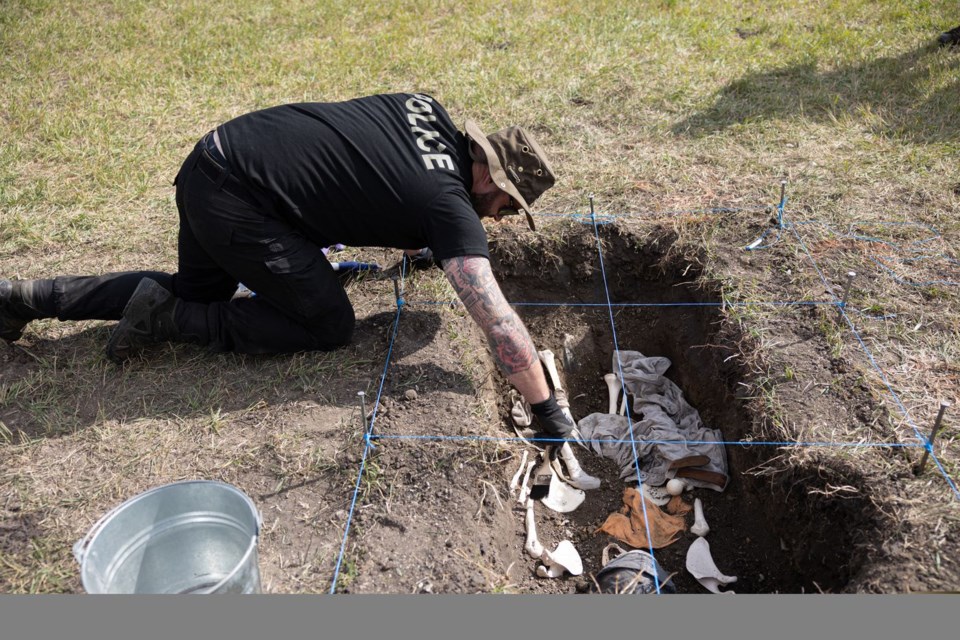SASKATOON - Under a blanket of heavy fog, dozens of police officers and coroners arrived at the Warman Fire Department training grounds on September 15 to practice digging up dead bodies.
The event was part of the Saskatchewan RCMP's course on forensic anthropology and the identification of human remains, which is designed to introduce officers to forensic anthropology, search processes, and the recovery and identification of human remains.
Forensic anthropologist Dr. Ernie Walker, a supernumerary constable with the Saskatchewan RCMP, teaches the course.
"We have folks from right across the country, from Newfoundland and British Columbia and from the North, and even one from state-side," Walker said. "They’re doing … very careful, scientific investigations, just like we would do in a normal situation."
Sargeant Donna Zawislak of the Saskatchewan RCMP Historical Case Unit said training events like this help to create a shared understanding of best practices during search processes, as well as a network of trained officers spread around the country.
"It allows us to share experiences, because there are police forces that are a little more isolated and don't have that experience, and maybe in their careers may only do one search where they have to remove human remains from a grave," she said.
The course has been offered every few years since the '90s, but this is the first year it has been held in Warman.
At the local fire department training grounds, instructors dug simulated grave sites and filled them with all sorts of 'evidence' for students to uncover — clothing, weapons, needles, pop cans, bottles, jewelry, shell casings and, of course, skeletons made of plastic bones.
Walker said the practice gravesites are as realistic as possible, except for one thing: Because there are no actual human bodies in the ground, it "just doesn't smell as bad as it normally smells."
Over the years, Walker said the course has sent many trainees back to their home communities with valuable experience.
"We’ve had folks on this course for many years who have written back to us and said, ‘I took the course and, three weeks later, I had to actually do this for real,' " he said.
Some parts of the training have changed a lot over time — they use ground-penetrating radar, metal detectors and drones to help find some of the grave sites, now — but others have stayed very much the same.
Uncovering a buried body still takes a careful, methodical process, with lots of sifting through dirt and taking careful measurements to make sure nothing gets missed.
"We want people to understand that you can watch a TV show where they find some remains and they go there, they collect everything and they're done within their little timeframe," Zawislak said. "That isn't the case here."
Looking over the field full of carefully-dug gravesites, with groups of trainees hard at work beside each, Walker said he's proud to be teaching these skills to such a large and motivated group.
"At the end of the day, who knew that this would happen in Saskatchewan?" he said. "It sounds like it should come from Quantico, Virginia or somewhere like that. But nonetheless, here we are."




